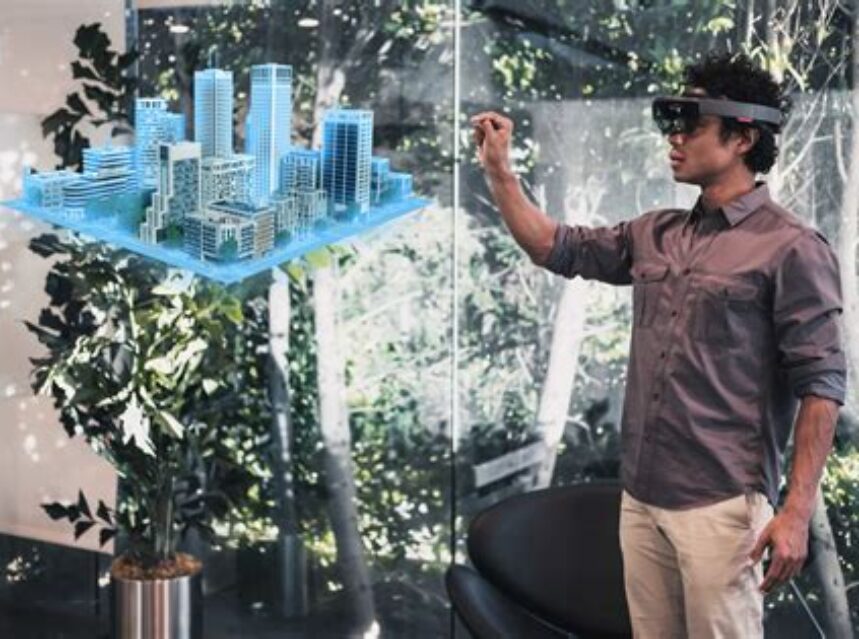Understanding the Role of Augmented Reality in Product Visualization

Discover the impact of augmented reality on consumer experience, product design, and retail success. Learn how to measure AR’s effectiveness in sales.In today’s digital age, technology continues to revolutionize how businesses and consumers interact. One such technology that has been making waves in the retail and product design industry is augmented reality (AR). Understanding the Role of Augmented Reality in Product Visualization is crucial for businesses looking to remain competitive in the market. This blog post aims to delve into the world of AR, starting with Defining Augmented Reality and its Impact on Consumer Experience. We will also discuss the importance of Integrating AR with Product Design and delve into Case Studies showcasing AR in Retail Success. Finally, we will explore the methods of Measuring AR’s Effectiveness in Sales. By the end of this blog post, readers will have a comprehensive understanding of how AR is shaping the future of product visualization and its pivotal role in enhancing consumer engagement and driving sales.
Defining Augmented Reality
Augmented Reality (AR) is a technology that superimposes a computer-generated image on a user’s view of the real world, providing a composite view. It is often used in mobile applications to enhance the user’s interaction with their environment. AR technology blurs the line between what is real and what is computer-generated by enhancing what we see, hear, feel, and smell. This technology is becoming more and more integrated into our daily lives, changing the way we interact with the world around us.
One of the main differences between AR and virtual reality (VR) is that AR does not create an entirely artificial environment. Instead, it enhances the real world environment with virtual elements. This means that AR technology can be used to improve real-world experiences, such as gaming, navigation, and even retail shopping.
AR has the potential to revolutionize the way businesses interact with consumers. By providing an interactive and personalized experience, companies can use AR to engage with their target audience in new and innovative ways. Whether it’s trying on virtual clothes or visualizing furniture in your home, AR has the power to transform the consumer experience.
As technology continues to advance, the potential uses for AR are limitless. From education to healthcare to entertainment, the applications of AR are vast and varied. Understanding the true definition of augmented reality is essential in order to appreciate its impact on our lives and the world around us.
AR’s Impact on Consumer Experience
Augmented Reality (AR) has revolutionized the way consumers experience products and services. By incorporating AR technology into marketing and sales strategies, businesses are able to provide a more interactive and immersive experience for their customers. This has significantly enhanced consumer engagement and satisfaction, ultimately leading to increased brand loyalty and revenue.
Furthermore, AR has transformed the traditional shopping experience by allowing consumers to visualize products in their own environment before making a purchase. This not only makes the decision-making process easier for the consumer, but also reduces the likelihood of returns and exchanges, resulting in cost savings for retailers.
Another key impact of AR on consumer experience is the ability to deliver personalized and customized content. With AR applications, businesses can tailor their offerings to match the specific preferences and needs of each individual consumer, creating a more personalized and targeted marketing approach.
Overall, the integration of AR into consumer experience has proven to be a game-changer for businesses, offering a new level of engagement, interactivity, and personalization that has redefined the way consumers interact with brands and make purchasing decisions.
Integrating AR with Product Design
Augmented Reality (AR) has revolutionized the way we interact with technology and has become an increasingly valuable tool in various industries. One area where AR has made a significant impact is in product design. By integrating AR with product design, companies are able to create more immersive and interactive experiences for their customers, leading to greater consumer engagement and ultimately, increased sales.
When integrating AR with product design, companies can use this technology to allow customers to visualize products in their own spaces before making a purchase. This not only provides a more personalized shopping experience, but also helps to bridge the gap between online and offline retail. By creating virtual product demonstrations, companies can showcase the features and benefits of their products in a way that is not possible with traditional marketing methods.
Furthermore, AR can be used to streamline the product design and development process. Designers and engineers can use AR to create and manipulate 3D models of their products, allowing them to easily identify any potential issues or improvements before the product goes into production. This not only saves time and resources, but also ensures that the final product meets the needs and expectations of the consumer.
Overall, integrating AR with product design has the potential to transform the way companies develop and market their products. By leveraging AR technology, businesses can create more engaging and personalized experiences for their customers, while also improving their internal processes and ultimately, their bottom line.
Case Studies: AR in Retail Success
Augmented Reality (AR) has made a significant impact on the retail industry, revolutionizing the way customers engage with products and brands. Several case studies have demonstrated the success of integrating AR technology into the retail experience, resulting in increased sales, customer engagement, and brand loyalty.
One notable case study is the implementation of AR by major makeup brands, allowing customers to virtually try on different makeup products through their mobile devices. This interactive experience has proven to boost customer confidence in purchasing makeup online, ultimately leading to a significant increase in sales for these brands.
Another successful example of AR in retail is the use of virtual fitting rooms by clothing brands. By using AR technology, customers are able to see how different clothing items look on themselves without physically trying them on. This not only enhances the overall shopping experience but also reduces the likelihood of returns, leading to higher customer satisfaction and repeat purchases.
Furthermore, furniture and home decor retailers have found success in implementing AR technology to help customers visualize how products would look in their own homes. This has not only increased customer engagement but also reduced the uncertainty associated with large furniture purchases, leading to higher conversion rates and customer satisfaction.
Measuring AR’s Effectiveness in Sales
Augmented Reality (AR) has been increasingly utilized in sales and marketing to enhance the customer experience and drive sales. As businesses continue to invest in this technology, it becomes crucial to measure its effectiveness in driving sales and achieving business goals. In this blog post, we will explore various methods and metrics used to measure the impact of AR on sales performance.
One way to measure the effectiveness of AR in sales is by analyzing the conversion rate of customers who interact with AR experiences compared to those who do not. By tracking the conversion rate of AR users and non-AR users, businesses can determine the impact of AR on driving sales and converting leads into customers.
Another important metric to consider when measuring AR’s effectiveness in sales is the average order value (AOV) of customers who engage with AR experiences. By comparing the AOV of AR users to non-AR users, businesses can gain insight into the impact of AR on increasing the value of customer purchases.
In addition to conversion rate and AOV, businesses can also measure the impact of AR on sales by analyzing the return on investment (ROI) of AR marketing campaigns. By tracking the costs associated with implementing AR experiences and the resulting increase in sales, businesses can determine the overall effectiveness of AR in driving sales and generating revenue.



